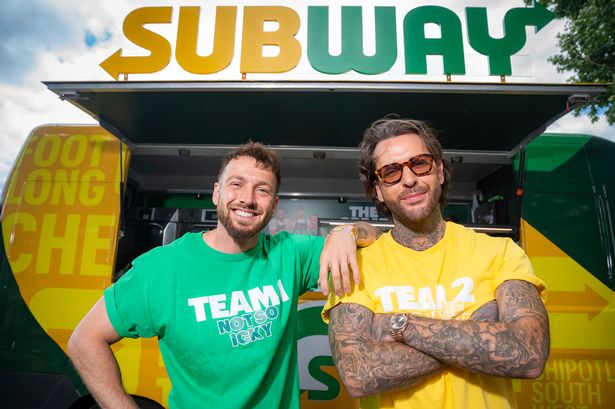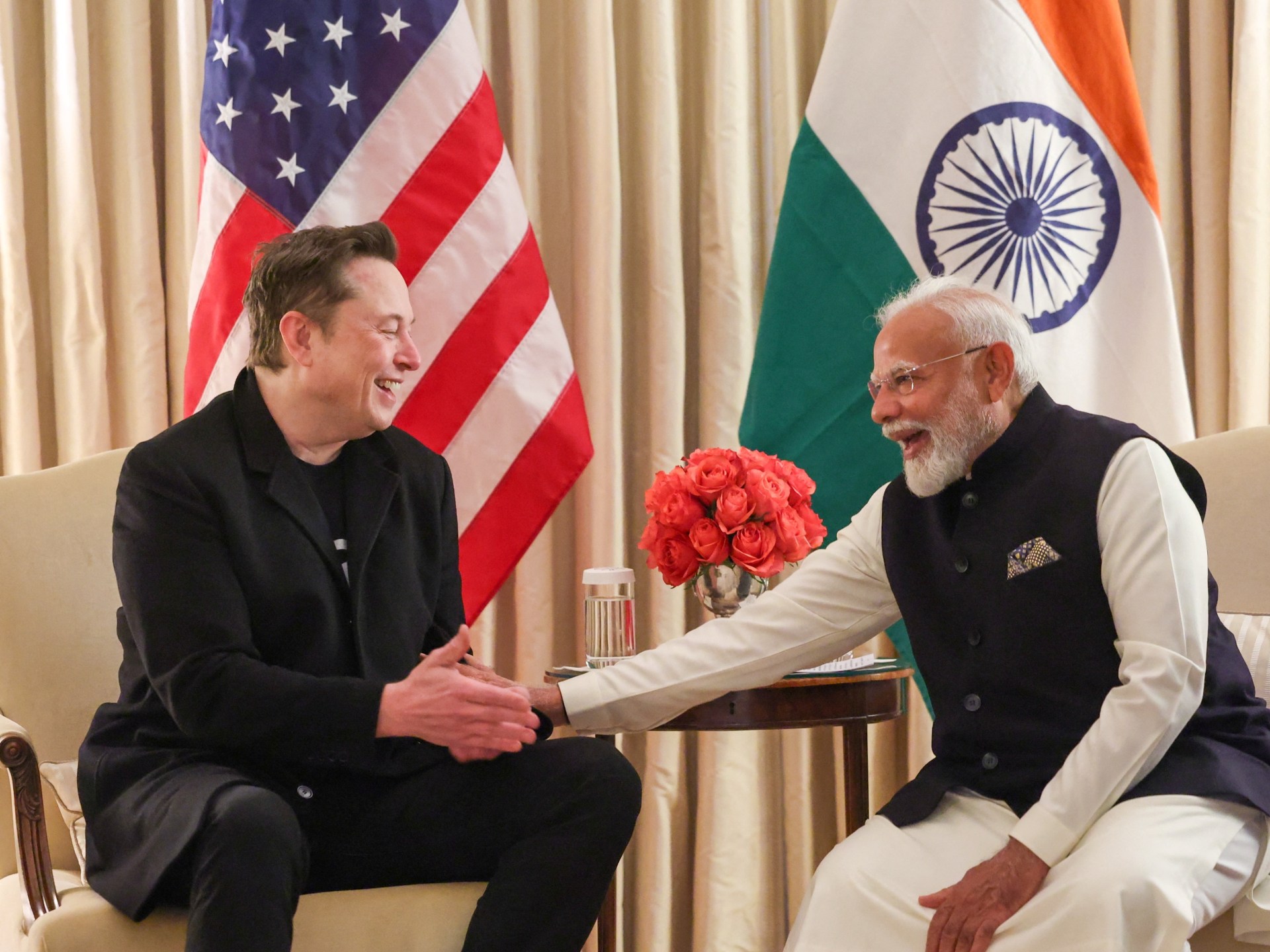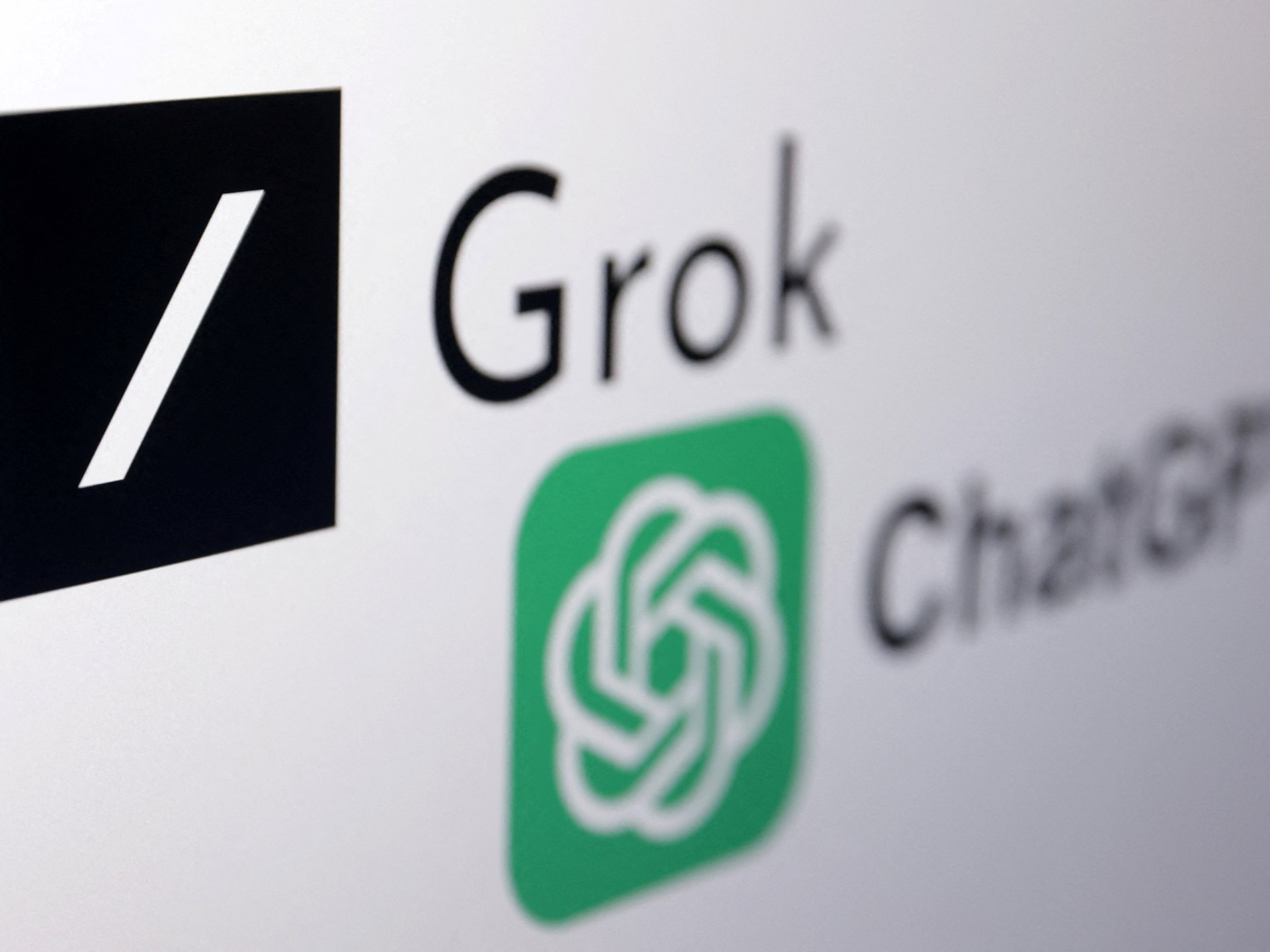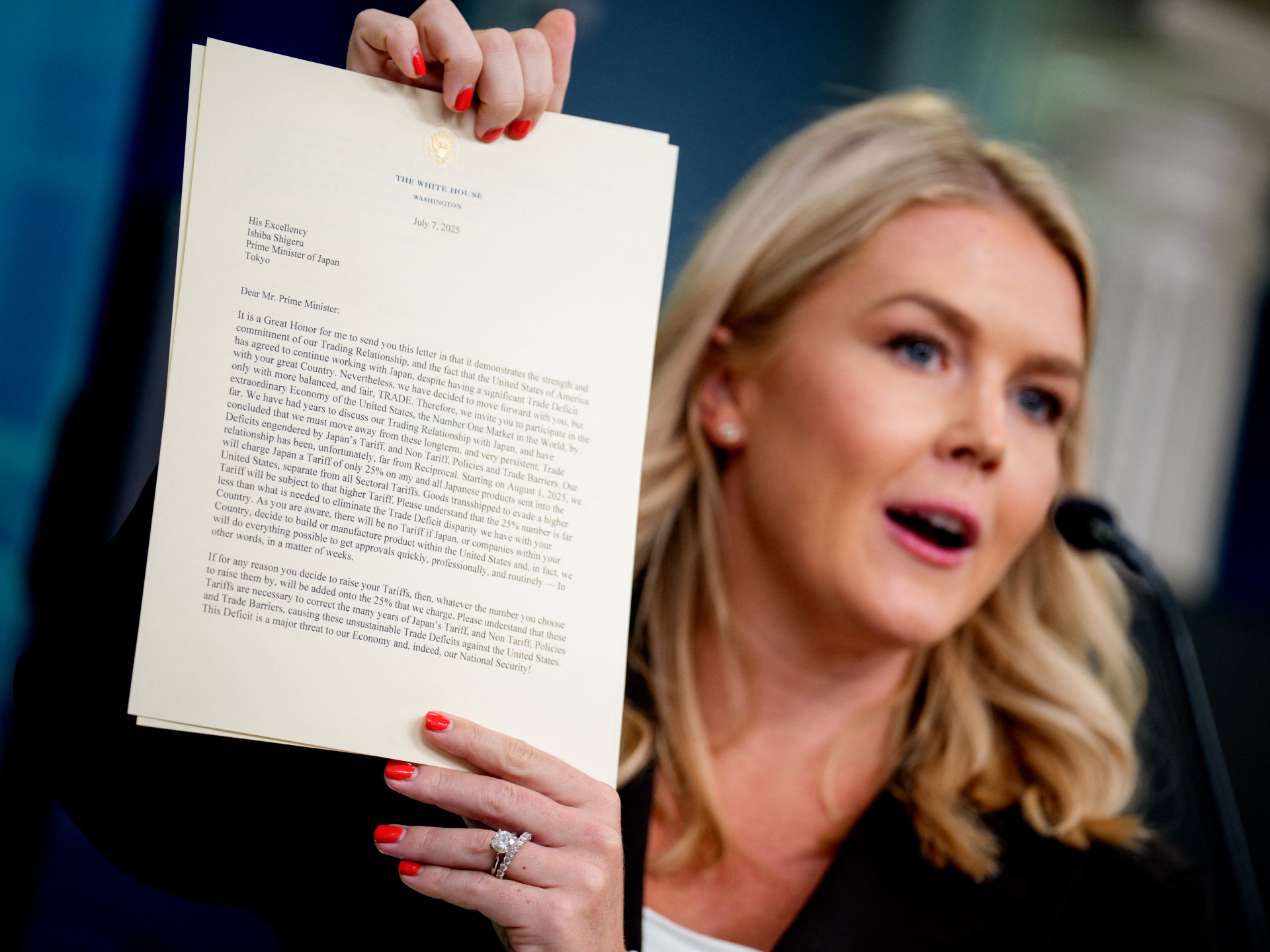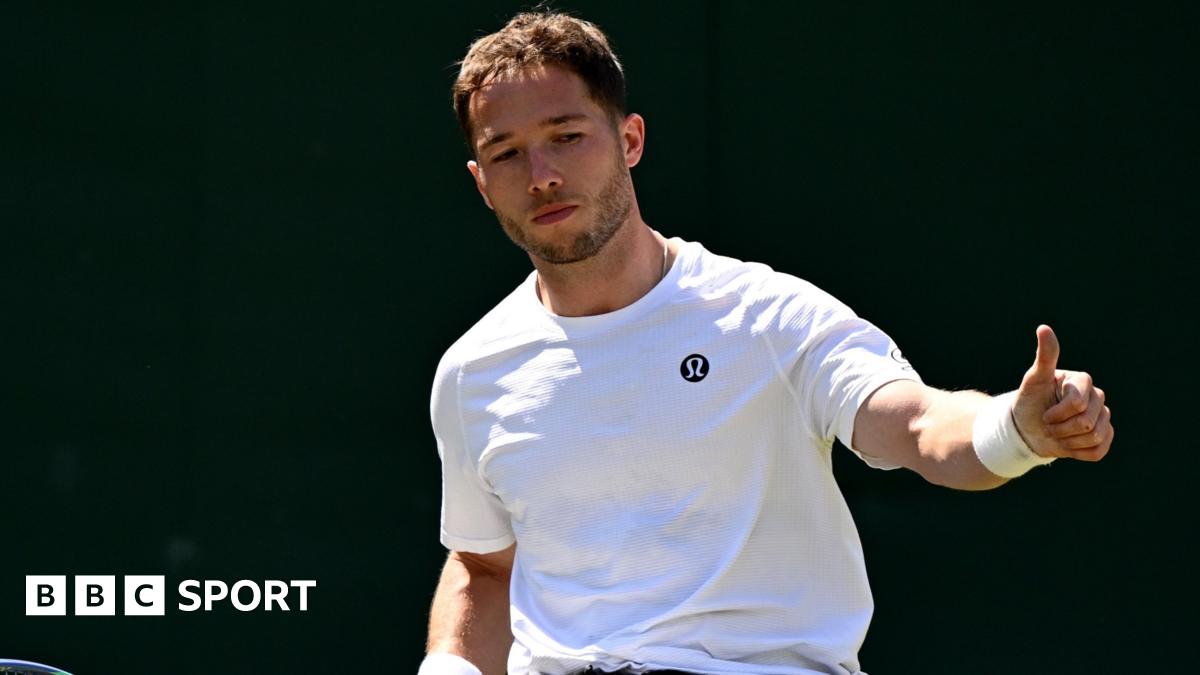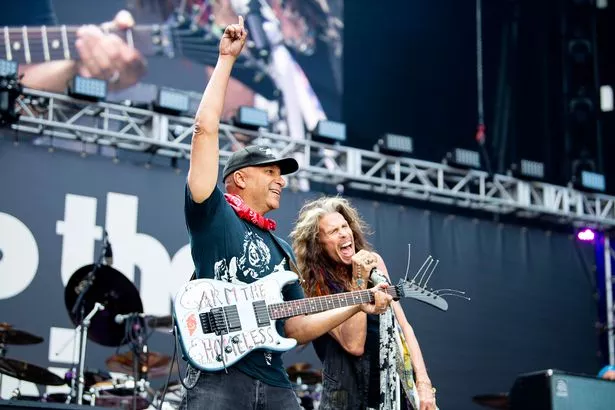United States President Donald Trump on Monday extended a pause on his sweeping reciprocal tariffs to August 1, while also sending “tariff letters” to some countries, warning they would be subject to new tariff rates if they failed to reach a trade deal with the US by the new deadline.
Here is what is going on with Trump’s reciprocal tariffs, and what his tariff letters say:
What has Trump announced?
On Monday, the White House released a fact sheet saying Trump signed an executive order extending the tariff pause.
The pause was originally scheduled to end on Wednesday, July 9, for the “Liberation Day” tariffs he initially announced on April 2. However, Trump imposed a 90-day pause on the steep reciprocal tariffs on April 9. During this period, most of the US’s trading partners faced a flat 10 percent tariff.
Which countries face renewed tariffs?
The White House listed 14 countries to which Trump sent tariff letters on Monday. These countries face these new tariff rates if they fail to reach a trade deal with the US by August 1.
The renewed tariff rates for these countries announced on Monday are:
- Japan: 25 percent, 24 percent on April 2.
- South Korea: 25 percent, 25 percent on April 2.
- South Africa: 30 percent, 30 percent on April 2.
- Kazakhstan: 25 percent, 27 percent on April 2.
- Laos: 40 percent, 48 percent on April 2.
- Malaysia: 25 percent, 24 percent on April 2.
- Myanmar: 40 percent, 44 percent on April 2.
- Tunisia: 25 percent, 28 percent on April 2.
- Bosnia and Herzegovina: 30 percent, 35 percent on April 2.
- Indonesia: 32 percent, 32 percent on April 2.
- Bangladesh: 35 percent, 37 percent on April 2.
- Serbia: 35 percent, 37 percent on April 2.
- Cambodia: 36 percent, 49 percent on April 2.
- Thailand: 36 percent, 36 percent on April 2.
For South Africa, South Korea, Thailand and Indonesia, these tariff rates are identical to what Trump had announced on April 2.
Malaysia and Japan face a 25 percent tariff, up 1 percent from the 24 percent tariff announced on April 2.
But most of the countries – Kazakhstan, Laos, Myanmar, Tunisia, Bosnia and Herzegovina, Bangladesh, Serbia and Cambodia – targeted by Trump on Monday now face lower tariffs than they did on April 2.
What do Trump’s tariff letters say?
Trump posted the tariff letters he sent to leaders of the 14 countries on his Truth Social platform on Monday.
In these letters, he expressed concerns about the trade imbalance between the US and the countries the letters are addressed to. Trump said companies that move their production to the US would be exempt from tariffs. But he also held out a threat: If countries impose retaliatory tariffs, they could face still higher tariffs from the US.
And he held out the prospect of a change in tariff rates. Trump ended all his letters with: “These Tariffs may be modified, upward or downward, depending on our relationship with your Country. You will never be disappointed with The United States of America.”
Why is he threatening the BRICS?
On Sunday, Trump also threatened the BRICS bloc with additional tariffs after the bloc, during its 17th summit in Brazil, indirectly criticised the US’s trade war, as well as its recent military attack on Iran.
“Any Country aligning themselves with the Anti-American policies of BRICS, will be charged an ADDITIONAL 10% Tariff,” Trump wrote on Truth Social.
BRICS is named for its founding members, Brazil, Russia, India and China, and South Africa, which joined a year later. But it has grown to include other countries, such as Indonesia, Egypt, Iran, Ethiopia and the United Arab Emirates.
How many deals are already in place with the US?
During the 90-day pause, the US brokered deals with two of its trading partners: the United Kingdom and Vietnam.
The first deal was secured on May 8, between the US and the UK, setting a 10 percent tariff on UK exports to the US. The deal states that the first 100,000 vehicles imported into the US from the UK each year will face a 10 percent tariff, down from the 27.5 percent imposed earlier. Additional vehicles imported each year will face a 25 percent tariff.
On July 2, Trump announced that he had secured a deal with Vietnam, which now faces a minimum 20 percent tariff in exchange for opening its market up to the US. Transshipments from third countries through Vietnam will face a 40 percent levy, while US products will not face any tariff in Vietnam. Specific details for this deal are unclear. On April 2, Trump had announced a 46 percent tariff on Vietnam.
When the pause was first announced, Trump administration officials had hinted that Washington was seeking a greater number of trade deals. “We’re going to run 90 deals in 90 days. It’s possible,” White House trade adviser Peter Navarro told Fox Business Network back in April.
Between then and now, Trump expressed pessimism about potential trade deals with some of the US partners. “We’ve dealt with Japan. I’m not sure if we’re gonna make a deal, I doubt it, with Japan,” Trump told reporters on July 1. “They and others are so spoiled from having ripped us off for 30, 40 years that it’s really hard for them to make a deal.”
Trump administration officials have indicated that stop-gap deals with India and potentially the European Union could be imminent.
How have the targets of Trump’s renewed tariffs reacted?
Japan and South Korea have said on Tuesday that they would try to reach deals with Trump to reduce the effect of US tariffs on their economies.
Japan’s chief trade negotiator and economy minister, Ryosei Akazawa, told a news conference on Tuesday that he is seeking concessions for Japan’s automobile industry but would not compromise on its agriculture sector. This is similar to the stance Japan has maintained when it comes to trade negotiations with the US.
“There’s no point striking a deal with the US without an agreement on automobile tariffs,” Akazawa said.
The agriculture sector has traditionally been a significant voting bloc for Japanese Prime Minister Shigeru Ishiba‘s Liberal Democratic Party, and elections to Japan’s upper house in parliament are scheduled for July 20.
Akazawa said he had spoken with US Commerce Secretary Howard Lutnick and they had agreed to continue negotiations.
“The two countries must garner trust through sincere dialogue, and reach common ground step by step. Through such a process, my job as negotiator is to agree on a full package as soon as possible,” Akazawa said.
The US is Japan’s largest export market, accounting for 19.1 percent of total Japanese exports in 2023, according to the Observatory of Economic Complexity (OEC).
Japanese automobile exports to the US alone contributed about 1 percent to Japan’s gross domestic product (GDP) in 2023.
South Korea said it too would step up trade talks with the US.
“We also plan to use it as an opportunity to improve domestic systems and regulations to resolve the trade deficit that is a major interest of the United States,” South Korea’s Ministry of Trade, Industry and Energy said in a statement on Tuesday.
By contrast, South Africa’s President Cyril Ramaphosa was more critical of the 30 percent tariff imposed by Trump on his country, deeming it “unilateral” in a statement published on the presidency’s X account on Tuesday.
“South Africa maintains that the 30 percent reciprocal tariff is not an accurate representation of available trade data,” the statement said. “In our interpretation of the available trade data, the average tariff imported goods entering South Africa stands at 7.6 percent.”
The statement added that 77 percent of US goods enter the South African market under a zero percent duty.
“South Africa will continue with its diplomatic efforts towards a more balanced and mutually beneficial trade relationship with the United States. We welcome the commitment by the US government, that the 30 percent tariff is subject to modification at the back of the conclusion of our negotiations with the United States.”
Tensions between the US and South Africa have surged in recent months.
During a meeting with Ramaphosa in the White House in late May, Trump accused South Africa of “genocide” against white Afrikaners, a claim that was denied by Ramaphosa and that has been widely discredited.
Earlier in May, a flight of white South Africans flew into the US as part of a relocation plan devised by the Trump administration.
How have markets reacted?
US stocks, based on the three major indices, fell on Monday.
The Dow Jones Industrial Average fell by 0.94 percent; S&P 500, which tracks the stock performance of 500 leading US companies, fell by 0.79 percent; and the Nasdaq Composite saw a 0.92 percent drop.
What are the key upcoming dates for the tariffs?
The upcoming dates, significant to the trade war, to look out for are:
- July 9: This is the original White House deadline for when countries needed to reach trade deals with the US or face steep tariffs. Trump and his team are expected to announce those tariff rates for several countries coinciding with the end of that deadline. It is also the date Trump set for the US and EU to reach a deal to remove a 50 percent tariff on all EU imports.
- July 14: On April 9, the EU had announced that it would impose retaliatory tariffs on the US against US tariffs on EU steel and aluminium imports. However, the union announced a 90-day pause to these retaliatory tariffs when Trump announced the 90-day pause to the reciprocal tariffs. On July 14, the 90-day pause announced by the EU is set to end.
- August 1: This is when the increased retaliatory tariffs imposed by the US on its trading partners are slated to come into effect, if these countries fail to reach trade deals with the US.
